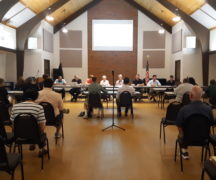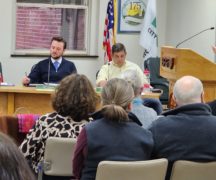An argument has been made that the proposed Pedestrian-Residential zoning is a return to “organic” mixed-use practices that existed when these neighborhoods developed in the 19th and early 20th centuries. In particular, it’s asserted that businesses in residential neighborhoods was the norm. Neither of these is so.
Bowling Green in 1900 and for decades thereafter was a compact central commercial district offering all the needs of life, surrounded by residential neighborhoods within walking distance of downtown. These, in turn, were surrounded by open fields or residual swamp.
Two rail lines entered the city, creating two industrial corridors — one on the western edge of town, one on the eastern edge. These did not involve retail operations nor was their placement a matter of municipal “policy.” Instead, it was a matter of cheap acquisition of right-of-way, rapid construction of railbeds, and service of commercial agriculture and industry.
The western line and its spurs served, at various times, a glass cutting and etching company, grain dealers, flour and feed mills, lumber yards, a bottling company, a grain elevator, an ice factory and creamery, and a “central delivery” facility. Most of this was between North Grove and North Maple where the City water and electrical facilities are now located. South of the depot at West Wooster were a railroad yard, glass works, a cement block manufactory, a cannery, other small industries, and three refineries.
On the east side, the original industry, fueled by the short-lived oil and gas boom, were glass factories. Grain elevators operated on Railroad Street as did the Snow Flake Lime Company. When the gas and oil boom faded, Heinz moved in. The line also served a lumber company, iron and steel works, a potato chip manufacturer, and a meat packer.
All the businesses located in these corridors today are there by virtue of this history, not by virtue of policy.
It is asserted that these and other “neighborhood businesses” did not undermine downtown businesses or the residential areas then, so why would they now? Part of the answer is that the industrial corridors were created on the edge of, not in, residential areas and the businesses in these corridors did not compete with downtown; their concern was supply and transport by rail, not retail sales and services.
Another part is that “neighborhood businesses” in the residential neighborhoods were rare. It hardly made sense to locate a business away from the area where townspeople did their shopping. “Neighborhood businesses” in Bowling Green is a nostalgic fantasy.
Tom Knox
Professor Emeritus of History, BGSU
Bowling Green




